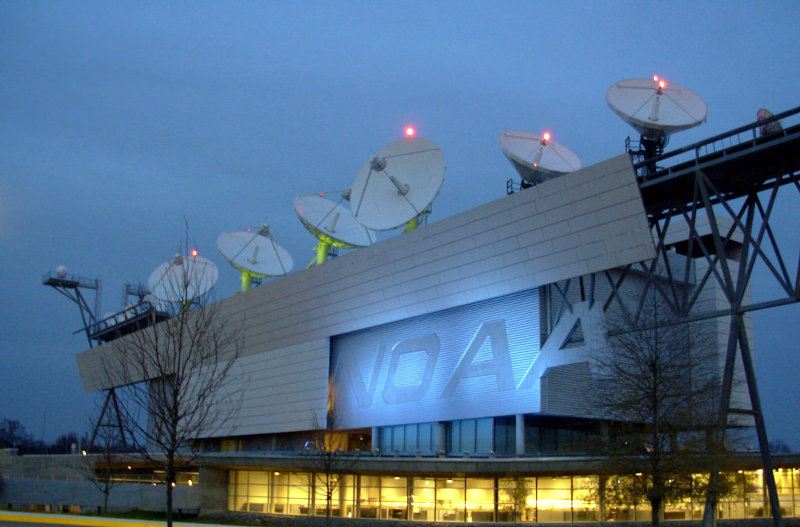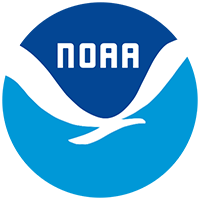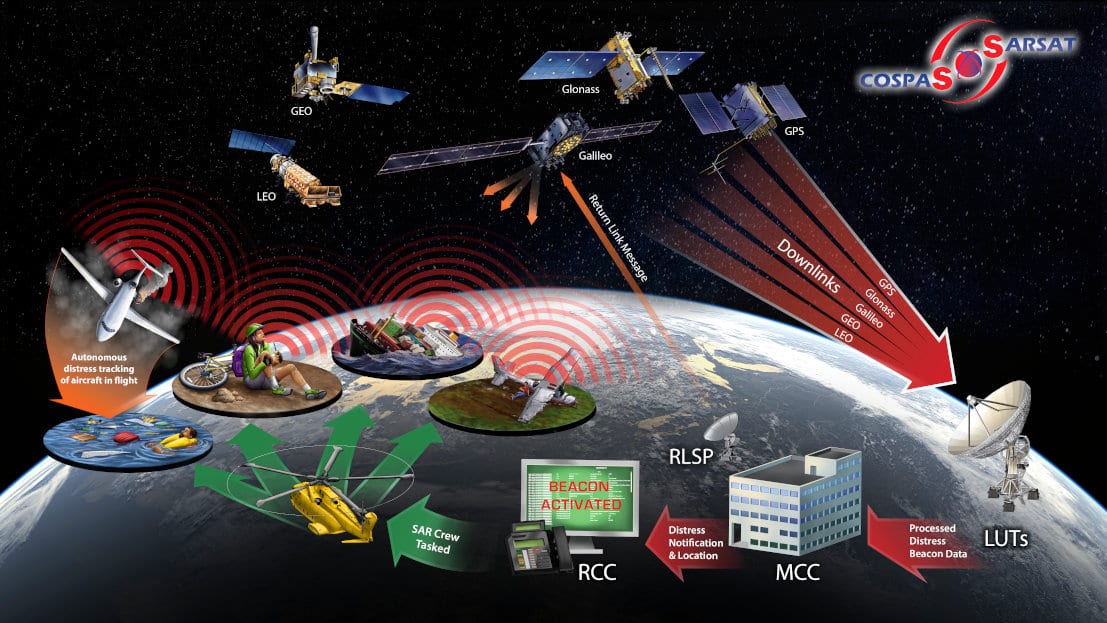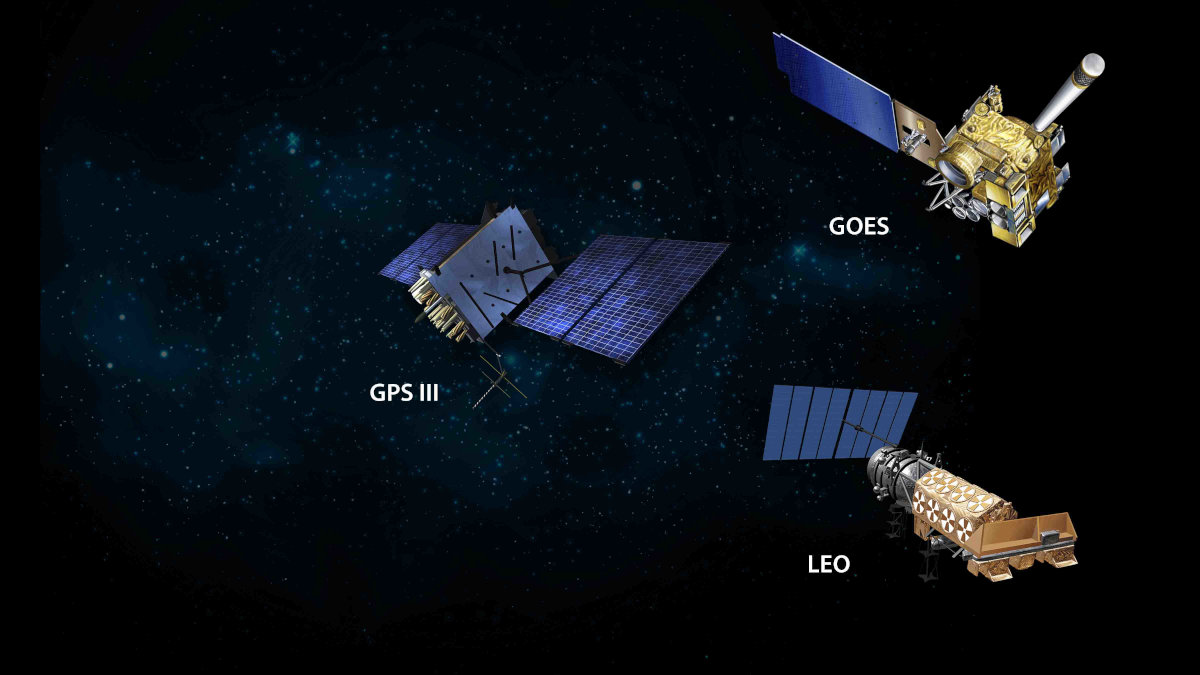Welcome to SARSAT
Image courtesy of Cospas Sarsat
This graphic illustrates the steps taken in the Cospas-Sarsat System each time a 406 beacon is activated and a search and rescue launched.
Search and Rescue Satellite-Aided Tracking (SARSAT)
Mariners, aviators, and recreational enthusiasts can all access the satellite system in an emergency using a portable radio transmitter called a 406 distress beacon. These beacons can send an SOS signal from anywhere on earth, at any time, including in most extreme weather conditions.
SARSAT is an integral part and founding member of the international humanitarian search and rescue system called Cospas-Sarsat. Cospas-Sarsat now includes 45 nations and two independent SAR organizations, all with the common goal of saving lives. Cospas-Sarsat brings together a worldwide network of satellites, ground stations, mission control centers, and rescue coordination centers to achieve this. No other distress-alerting system can match its global reach and distress detection capabilities.
The three types of satellites that SARSAT uses to carry search and rescue payloads.

More details about us
Select one of these topics to know more details about SARSAT
- SARSAT Mission statement
- History of SARSAT
- How does the SARSAT system work?
- Joint partnership with Cospas-Sarsat
SARSAT – Your Lifeline to Survival!


